Heel Spurs
Definition:
Heel spurs are bony outgrowths that develop on the underside of the heel bone (calcaneus), often caused by long-term strain on foot muscles, ligaments, or the plantar fascia. Whereas spurs below the sole are linked to plantar fasciitis, dorsal spurs are frequently linked to Achilles tendinopathy.
Within the origin of the plantar fascia (on the medial tubercle of the calcaneus) or above it (in the origin of the flexor digitorum brevis muscle), the spur’s apex is located. The medial tubercle of the calcaneus, the intrinsic heel muscle, and spur development work together to pull the plantar fascia continuously, which causes inflammation.
What is a Heel Spur?
Heel spurs can cause heel pain, even though they are frequently painless.
Exercise, specially designed orthotics, anti-inflammatory drugs, and cortisone injections are some of the treatments for heel spurs and related disorders. Although the example we’re giving here is a spur at the bottom of the heel that is sometimes confused with plantar fasciitis, spurs can form anywhere tendons attach to bone.
Clinically Relevant Anatomy:
The tuberosity and surrounding areas of the calcaneus are pulled by several muscles, including the soleus, gastrocnemius, plantaris, abductor digiti minimi, flexor digitorum brevis, extensor digitorum brevis, abductor hallucis, extensor hallucis brevis, and quadratus plantae, as well as the plantar fascia, particularly when excessive or aberrant pronation takes place. The attempted repair of these tears causes inflammation, which is what causes and sustains the symptoms.
Epidemiology:
There has been discussion on the cause of spurs. Numerous additional conditions have also been linked, including tuberculosis, metabolic abnormalities, hereditary disorders, and systemic inflammatory diseases.
A painful plantar heel and inferior calcaneal spur are thought to be mostly caused by poor biomechanics, notably excessive or abnormal pronation. According to one epidemiologic investigation, 11% of adult Americans had a calcaneal spur that was discovered by chance radiography.
Causes of Heel Spurs:
Heel spur risk factors include:
- jogging or running, particularly on hard ground.
- Shoes that are ill-fitting or worn out, particularly ones without the proper arch support.
- Obesity and excess weight.
Symptoms of Heel Spurs:
Many times, heel spurs don’t cause any symptoms. However, if inflammation occurs at the site of the spur production, heel spurs may be linked to either chronic or sporadic pain, particularly when walking, jogging, or running. When they rise after sitting for a long time, they frequently lament that the intense pain returns.
Risk Factors of Heel Spurs:
You are more likely to develop heel spurs if you have plantar fasciitis (or any tendinopathy elsewhere in the body) that has been chronic for more than eight weeks. This is because it indicates that the body is attempting to heal the condition by pushing at the tissues and creating excessive stress. Because of this, several demographics are more susceptible to heel spurs:
- The plantar fascia’s flexibility declines with age in older adults, and the fat pad that cushions and protects the heel bone also thins.
- Active runners, joggers, and jumpers put additional strain on the heel bone when they train, particularly if they do so for a long time and on hard terrain.
- Individuals with irregular gait, which puts undue strain on the heel bone and its supporting structures
- People who frequently wear worn-out or unsupportive footwear.
Heel spurs vs. plantar fasciitis:
Plantar fasciitis affects up to 15% of those who have foot issues that need medical treatment.
A calcium buildup that creates a bony protuberance along the plantar fascia is called a heel spur.
The plantar fascia is frequently compared to a bowstring by medical professionals. It connects to the heel and extends beneath the sole. An excessive amount of force applied to this area of the foot causes plantar fasciitis.
Another risk factor for plantar fasciitis is diabetes.
Diagnosis of Heel Spurs:
A thorough physical examination, an X-ray, and your medical and injury history are necessary to accurately diagnose a heel spur because its symptoms might be confused with those of other heel pain conditions, such as plantar fasciitis.
Treatments for Heel Spurs:
Medical Treatment:
Rest may not be the best course of action for heel pain caused by plantar fasciitis and heel spurs. However, either extended rest or walking may cause the pain to return.
They might suggest conservative measures like:
- Stretching exercises
- Shoe recommendations
- Resting strained muscles and tendons with tape or straps
- Orthotic devices or shoe inserts
- Physical therapy
- Night splints.
Many times, biomechanical abnormalities that cause heel and arch pain can be addressed with a functional orthotic device.
Surgical Treatment:
Surgery may be required to reduce pain and restore mobility if conservative treatment is unable to address heel spur symptoms after nine to twelve months. Surgical methods consist of:
- The plantar fascia’s release
- Taking out a spur.
Physical Therapy Treatment:
Low Dose Radiation Therapy
Evidence suggests that re-irritating the painful heel spur is a safe and efficient treatment when done this way. Pain was significantly reduced for at least two years, while there may be a placebo effect.
Thermotherapy
Heat therapy can help relax tense muscles and increase circulation and oxygen flow to the injured area. Exercise-related pain may be lessened with the help of thermotherapy.
Heel spurs can be effectively treated with low-intensity laser therapy.
Conservative treatment: Although conservative measures can lessen bone spur symptoms, they don’t necessarily address the underlying cause of your pain.
Very high-intensity mechanical waves are used in radial shockwave therapy to target plantar fasciitis and assist in reducing inflammation.
Extracorporeal Shock Wave Therapy (ESWT):
Plantar fasciitis may not respond well to extracorporeal shock wave therapy (ESWT), according to a number of studies. Night splints claim that the following treatments work better: massage, taping, acupuncture, walking casts, laser therapy, and cryotherapy. According to Shafshak, ESWT seemed to be beneficial in reducing heel pain in calcaneal spur patients, particularly when administered during the first four months following the onset of symptoms.
Orthotics:
In order to treat heel pain caused by conditions like plantar fasciitis or heel spurs, orthotics are frequently used.
Footwear Modification:
- Footlogics: relieve forefoot pain, achilles tendinopathy, and plantar fasciitis (heel pain and heel spurs).
- Insoles: All patients who had Sever’s injury-related heel pain continued to engage in high levels of physical activity during the research period while wearing insoles without any further therapies. Wearing insoles was proven to significantly reduce pain during physical activity.
What May Occur If I Ignore the Heel Spur?
We usually advise addressing heel pain as soon as it appears, since if you ignore it, there’s a significant possibility it will continue and maybe get worse, which will limit your everyday activities. However, therapy is not recommended for the heel spur itself if it is discovered by chance without any pain or symptoms, or if treating plantar fasciitis alleviates your symptoms. In these situations, the spur is probably going to stay there and not bother you.
Prevention of Heel Spurs:
Although it is unclear why some persons with tissue tension on their heel bone develop heel spurs and others do not, the best defense against heel spur development is to address any heel pain as soon as it appears and avoid letting severe stress persist for extended periods of time. Working with a podiatrist to address your heel pain is crucial in this situation. Because podiatrists specialize in foot health, working with one can lead to:
- To fully understand the cause of your heel pain, be it plantar fasciitis, a heel spur, or another condition
- To have the knowledge and resources necessary to maximize your recovery at home
- To understand how to assist in stopping future occurrences of your heel pain
- To always feel completely supported by knowledgeable, kind medical personnel.
Prognosis:
Heel spurs have a promising future. Unless surgically removed, the calcium deposit will always be present; however, this is typically not an issue because pain and edema reduction measures are usually successful.
Conclusion:
In conclusion, plantar fasciitis is frequently linked to heel spurs, a common condition that, if neglected, can result in severe heel pain. The majority of patients get relief without the need for surgery with early diagnosis, appropriate footwear, physical therapy, and lifestyle changes. Improving general foot health and avoiding chronic pain require prompt intervention.
FAQs
Which foods can cause heel spurs?
Foods high in fat
People with heel pain should avoid high-fat diets such as red meat, fried foods, and dairy items. Obesity and inflammation caused by these meals might put additional strain on your feet. Your heels may get even more painful as a result.
Does relaxation help with heel spurs?
The best treatment for heel spurs is rest, since soft-tissue issues in the foot make them worse. Individuals who work in fast-paced environments or who are always on their feet may be reluctant to take breaks.
Are heel spurs temporary?
These are permanent bone growths; however, therapy for the underlying cause, plantar fasciitis, for example, may lessen their pain. Even though the spur itself might not go away, treating the pain and suffering it causes can greatly enhance one’s quality of life.
Is coconut oil beneficial for heel spurs?
Before going to bed each night, massage the affected area with warm coconut oil. Redness, irritation, and edema can all be lessened by applying an ice pack.
Can heel pain be lessened by walking?
You can temporarily replace jogging with walking since daily walks help to stretch your plantar fascia and calf muscles. Additionally, make sure you keep wearing the suggested orthotics and supportive, comfy shoes for every activity.
Does uric acid cause heel pain?
Heel pain is not primarily caused by uric acid; however, it is a contributing component to gout, which can cause foot pain. Although it’s not the most prevalent cause of heel pain, gout, a kind of arthritis caused by elevated uric acid levels, can cause joint inflammation and pain, especially in the heel.
How can spurs be treated at home?
Epsom Salts
It contains magnesium sulfate, which has been demonstrated to be an effective way to reduce heel spur inflammation.
How quickly may a heel spur be healed?
Conservative measures, including rest, ice, anti-inflammatory drugs, stretching, and supportive shoes, are usually the quickest approach to heal a heel spur. Healing might take anything from a few weeks to many months, depending on the severity and devotion to treatment.
What is the average duration of heel spur pain?
Heel Spurs: With the right care, such as orthotics, therapy, or anti-inflammatory drugs, relief may take months. Stress Fractures: With rest and potential immobilization, recovery usually takes 6–8 weeks.
What is the source of heel pain?
Several nutritional deficiencies can indirectly induce or worse heel pain; however, they are not the main reason. Deficits in vitamin D, calcium, and magnesium are most frequently associated with heel pain problems such as plantar fasciitis. Although less closely related, vitamin B12 deficiency might also be involved.
How may heel pain be relieved?
Extend your arches. You can stretch your calf muscles, Achilles tendon, and plantar fascia easily with easy at-home workouts.
How can heel spur pain be avoided?
Your heel pain will go away if you take a break when running or jogging. applying ice or cold packs and consuming anti-inflammatory drugs orally.
References
- Heel Spurs. (2025, June 2). Cleveland Clinic. https://my.clevelandclinic.org/health/diseases/21965-heel-spurs
- Ansorge, R. (2022, August 28). Heel spurs and plantar fasciitis. WebMD. https://www.webmd.com/pain-management/heel-spurs-pain-causes-symptoms-treatments
- Heel spurs. (n.d.). The Feet People. https://www.thefeetpeople.com.au/symptoms-we-treat/heel-spurs/
- Burgess, L. (2023, November 17). Heel spurs: What you need to know. https://www.medicalnewstoday.com/articles/320411
- Cherney, K. (2019, November 23). Everything you need to know about Heel Spurs. Healthline. https://www.healthline.com/health/heel-spurs

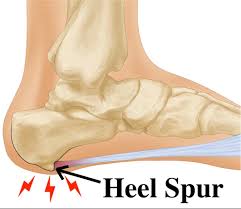
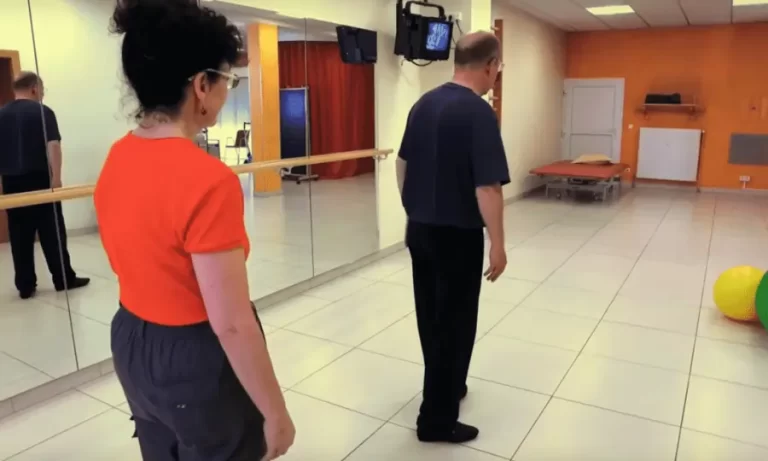


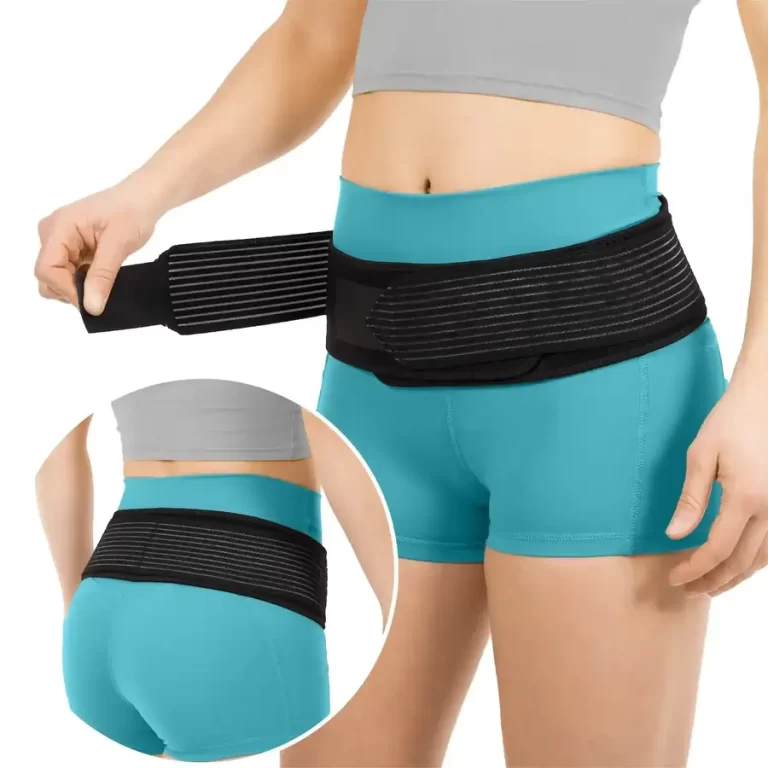
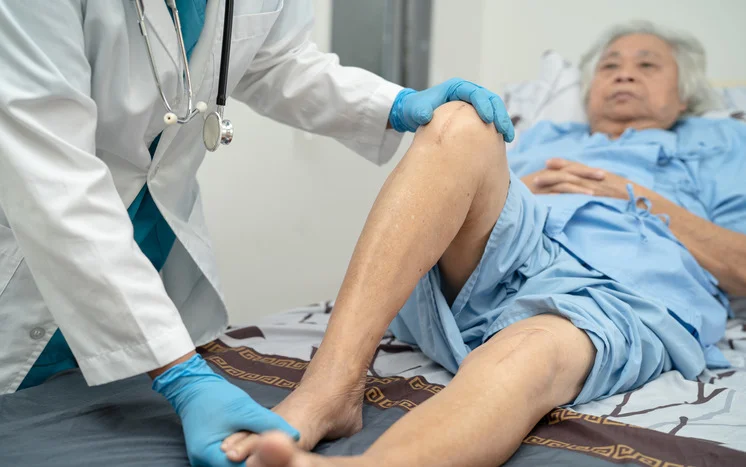
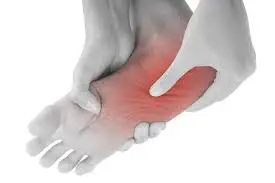
3 Comments